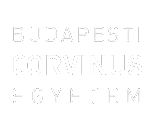Kócsó, Barbara Tünde (2020) Why Agile Project Management is Critical in Hungary for Business Competitiveness. BA/BSc szakdolgozat, BCE, International Study Programs. Szabadon elérhető változat / Unrestricted version: http://publikaciok.lib.uni-corvinus.hu/publikus/szd/Kocso_Barbara_Tunde.pdf
|
PDF
- Requires a PDF viewer such as GSview, Xpdf or Adobe Acrobat Reader
587kB |
Szabadon elérhető változat: http://publikaciok.lib.uni-corvinus.hu/publikus/szd/Kocso_Barbara_Tunde.pdf
Absztrakt (kivonat)
In our dynamically evolving and constantly changing environment, the speed of answering to our customers’ needs, the quality of our product or the satisfaction received all contribute to the overall success of a company. To survive and thrive in the uncertainty of market and social conditions, businesses are implementing project management methodologies, that could provide the expected results. Moving away from traditional project management, the more recent methodologies of agile, lean or six sigma all present distinct values, that could be beneficial for a company. In this paper, I demonstrate how agile project management can support software development and discover the reasons behind its criticalness for Hungarian organisations in order to be competitive and efficient in the long-run. My research provides answers to why companies turning towards agile project management, why is it becoming more and more crucial in Hungary and how can it be implemented in order to provide the highest added value possible, while keeping in mind the special characteristics of each firm. The paper through the gained valuable information either proves or disproves the following hypothesis statements: • Teamwork and communication are the basis for a productive agile way of working. • Implementing the agile principles and values can result in lower lead time and cost component for the organisation. • In Hungary, the main motivation behind agile transformation is satisfying the customers through cost reduction and less time-to-market. First, the main philosophies and materials are presented, that have all contributed to the agile project management’s status including similar approaches, such as lean project management. The main economic models are also introduced in order to provide the basis for further discussion of the respective companies. SWOT and VRIO analysis are conducted through the primer research, while the benefits of PESTEL and Porter’s 5 forces are utilised in case of the secondary research. Regarding the methodology and the exact research, it is made up of two parts, that aim to provide a comprehensive picture in the end. Through primer research, deep interviews are conducted with an already prepared question set. The participants of my analysis cover both financial and non-financial sectors. What is more, to have a wide range of opinions and experiences collected I have interviewed organisations, who have adopted agile project management in different extents. Furthermore, as the second part through secondary research, I have examined data and information provided by companies on how they implemented agile transformation and personalised it to their own organizational culture and processes. It mainly focuses on two Hungarian organisations, one from the finance and one from the service sector. The reason behind this specific distribution originates from my work experiences. I am an intern at a global investment bank, where fortunately I have the opportunity to gain a more extensive overview of the financial sector side with all of its strengths and weaknesses. As a result, we can definitely conclude through the gained information and the conducted analysis, that agile project management heavily contributed to the sustainable development of the examined firms. It remarkably enhanced their productivity, reduced lead time and cost, unified the team and put their clients’ interest first. As the interviewed analyst from the investment bank experienced, even though now they have more meetings and discussions, the possibility of uncovered scenarios and bugs decreased in such an amount, that they still save time, and simultaneously money with not having to fix a lot more defects. It justifies two of my hypotheses, first the importance of communication and the approach’s effect on time and cost reduction. The importance of communication and the unity inside the teams was further emphasized throughout both the interviews and secondary research. Through the interviews, I have also covered the perception of the Hungarian market, where agile transformation is becoming more and more popular but still only a few businesses have implemented it. Regarding my hypothesis statement, where I suggested that the main motivation for companies in switching to agile project management is to save time and money was not justified. Rather the contrary, the SME from the secondary research exactly emphasized, that although it is an important factor, it shouldn’t be the main motivation. A different phenomenon was presented through the companies, rather focusing on the attraction of highly skilled and talented workforce. Almost each of them referred to the current shortage in IT professionals and how significant it is to provide the most innovate technology and methodology in order to attract and maintain them in the long-run. Agile project management is already present in the Hungarian market, although concluding from my research I expect it to be even more relevant and one of the most implemented project management approaches in the future. Those businesses realising its advantageous effects at still an early stage, could benefit from the added efficiency, time-to-market reduction or the enhanced ability to handle change management.
| Tétel típus: | BA/BSc szakdolgozat |
|---|---|
| Témakör: | Vállalati vezetés és politika |
| Azonosító kód: | 14010 |
| Képzés/szak: | Business Administration and Management |
| Elhelyezés dátuma: | 13 Okt 2021 11:25 |
| Utolsó változtatás: | 02 Dec 2021 09:26 |
Csak a repozitórium munkatársainak: tétel módosító lap

